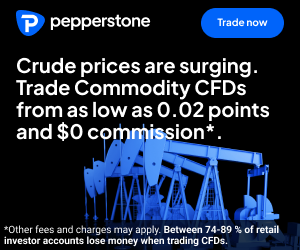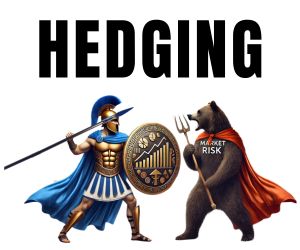STOP-LOSS ORDERS AND HOW THEY PROTECT FOREX TRADES
In forex trading, the stop-loss order is one of the most important tools for protecting capital. It is a preset instruction given to a broker to close a position once the market price reaches a certain level, thereby limiting the potential loss on that trade. While it may seem like a simple safeguard, the stop-loss is central to professional risk management, allowing traders to define their maximum downside before they even enter a position. In markets where prices can swing sharply on news, data releases, or liquidity shocks, the stop-loss order provides structure, discipline, and peace of mind.

Stop-Loss Basics
A stop-loss order is a conditional instruction to exit a position automatically once the price of a currency pair moves against the trader by a specified amount. For example, a trader who buys EUR/USD at 1.0850 might place a stop-loss at 1.0800. If the market falls to that level, the broker executes a sell order, closing the position and capping the loss at 50 pips. The purpose is straightforward: to limit downside risk and prevent a small setback from becoming a portfolio-damaging event. Unlike discretionary exits, which rely on a trader’s judgement in the heat of the moment, stop-losses impose discipline by acting automatically.
Origins and Evolution
The stop-loss has its roots in equity and commodity markets, where traders needed a way to manage exposure when they could not monitor positions continuously. In forex, the 24-hour nature of trading makes stop-losses even more essential. They allow participants to sleep, work, or step away from the screen without leaving themselves vulnerable to overnight volatility. Over time, brokers and platforms have refined stop-loss functionality, introducing features such as trailing stops and guaranteed stop-loss orders, which further enhance protection. Today, stop-loss orders are standard across retail and institutional trading platforms, embedded into order tickets alongside take-profit and entry levels.
How Stop-Losses Work in Practice
When a trader enters a position, the stop-loss is placed at a predetermined price level. If that level is hit, the order converts into a market order, and the broker executes the trade at the next available price. This conversion is key to understanding the strengths and limitations of stop-losses. On the one hand, it ensures execution—when the trigger is reached, the trade is closed. On the other hand, it introduces the possibility of slippage, particularly in fast-moving or illiquid markets. For instance, during a surprise central bank announcement, the fill price may be worse than the stop level specified, meaning losses can exceed expectations. This nuance highlights why stop-losses are effective but not infallible.
Psychological Benefits
Beyond the mechanics, stop-losses provide profound psychological benefits. Trading is inherently emotional, and the fear of loss can cloud judgement. By pre-committing to an exit point, traders reduce the temptation to hold onto losing positions in the hope of a reversal. This discipline helps maintain consistency, which is often more important than maximising individual trade outcomes. Professional money managers routinely highlight the psychological edge provided by stop-losses, as it prevents losses from spiralling due to hesitation or denial. In this sense, the stop-loss is not only a technical tool but also a mental safeguard against the biases that plague decision-making under stress.
Types of Stop-Loss Orders
Several variations of stop-loss orders exist, each suited to different trading styles. The most basic is the fixed stop, where a static price level defines the maximum acceptable loss. Trailing stops, by contrast, move with the market: if a trade becomes profitable, the stop level adjusts upward (for long positions) or downward (for shorts), locking in gains while preserving downside protection. Guaranteed stop-losses, offered by some brokers, eliminate slippage risk by ensuring execution exactly at the stop price, though they often involve additional costs. Each type reflects the balance between flexibility, certainty, and cost that traders must consider when designing their risk management systems.
Relevance Across Timeframes
Stop-loss orders are relevant across all trading horizons. Day traders use them to cap losses on short-term positions, where intraday volatility can quickly erase gains. Swing traders, who hold positions for days or weeks, rely on wider stop-losses to account for noise while protecting against major reversals. Even long-term investors use stop-losses to protect capital in case of extreme market moves or unexpected geopolitical shocks. Their adaptability across timeframes underlines their central role in forex trading, ensuring that no strategy is entirely exposed to open-ended risk.
Examples in Forex Markets
Consider a trader who buys GBP/JPY at 185.20 with the expectation of yen weakness. By setting a stop-loss at 184.50, the trader limits the downside to 70 pips. If geopolitical news strengthens the yen, the position is closed automatically, preventing deeper losses. In another case, a trader long USD/CHF at 0.9150 with a trailing stop of 30 pips would see the stop adjust higher as the dollar rallies. If the market reverses, the stop-loss captures gains without manual intervention. These examples illustrate the versatility of stop-losses in managing risk under varying conditions.
Why Basics Matter
Understanding the basics of stop-loss orders is indispensable for anyone active in forex. They are not optional extras but foundational tools that preserve capital, enforce discipline, and support consistent performance. By grasping how stop-losses work, the psychological edge they provide, and the different types available, traders equip themselves to navigate the volatile and unforgiving world of currency markets. Stop-losses may not guarantee profits, but they guarantee survival—and in trading, survival is often the key to long-term success.
Placement Tips
Knowing that stop-loss orders exist is one thing, but using them effectively requires careful consideration of where they should be placed. Poor placement often results in premature exits, missed opportunities, or losses larger than necessary. A well-placed stop-loss balances protection with room for the trade to breathe, taking into account market structure, volatility, and the trader’s overall strategy. Successful forex traders view placement not as a rigid formula but as a dynamic process that adapts to the conditions of each trade.
Avoiding Arbitrary Distances
One of the most common mistakes is placing a stop-loss a fixed number of pips away from the entry, without reference to market context. For example, always using a 30-pip stop on EUR/USD may work in quiet markets but can be far too tight when volatility spikes. Instead, stops should be set with reference to technical structures, such as support and resistance levels, trendlines, or moving averages. By anchoring stops to actual market behaviour, traders reduce the likelihood of being taken out by routine noise.
Using Technical Levels
Support and resistance zones are among the most reliable guides for stop-loss placement. If a trader goes long on GBP/USD after it breaks above resistance at 1.2500, placing the stop just below that level—perhaps at 1.2470—ensures that the trade is only exited if the breakout fails. Similarly, trendlines and moving averages provide dynamic guides, allowing stops to be adjusted as price evolves. The logic is simple: exit only if the underlying thesis is invalidated, not because of random short-term fluctuations.
Accounting for Volatility
Volatility is another key determinant. The Average True Range (ATR) indicator is a popular tool for measuring typical price movement. Traders may place stops one or two ATRs away from entry to account for normal market swings. For instance, if EUR/USD has an ATR of 40 pips, setting a stop 80 pips away gives room for volatility while still defining risk. Adjusting stops dynamically based on volatility prevents trades from being closed prematurely during turbulent sessions, such as when central banks announce rate decisions.
Avoiding Clustering
Markets often hunt liquidity around obvious levels. Placing a stop exactly at a round number or widely recognised support can make it a target for stop runs, where large players push prices to trigger clustered orders. To reduce this risk, traders often give their stops a small buffer, placing them slightly beyond the obvious level. For example, instead of setting a stop at 1.2000, they might use 1.1990 or 1.1985. This simple adjustment can mean the difference between being stopped out prematurely and surviving to capture the intended move.
Position Sizing and Risk Tolerance
Stop-loss placement is inseparable from position sizing. The wider the stop, the smaller the position must be to keep risk within acceptable limits. For instance, a trader with a $10,000 account who is willing to risk 2% ($200) per trade must size their position so that if the stop is hit, the loss does not exceed that amount. If the stop is 50 pips away, the position can be larger than if it is 150 pips away. This calculation ties stop placement directly to account management, reinforcing discipline.
Adapting to Timeframes
Different trading horizons call for different placement strategies. Scalpers often use extremely tight stops, sometimes as little as 5–10 pips, relying on high win rates and quick exits. Swing traders, in contrast, may use stops of 100–200 pips, giving trades the room to play out over several days. Long-term traders use even wider stops, but always relative to the timeframe and volatility they operate in. A stop that is too tight for the timeframe increases the risk of whipsaws, while one that is too loose undermines risk control.
Examples of Effective Placement
Consider a trader shorting USD/JPY after it fails to break above resistance at 150.00. Placing the stop at 150.50 ensures that the trade only closes if the breakout eventually succeeds. In another example, a long position in AUD/USD during a commodity rally might use a stop below the 50-day moving average, signalling that the medium-term trend has broken. These examples illustrate how anchoring stops to meaningful levels strengthens risk management, ensuring trades are exited only when the underlying rationale has been invalidated.
The Balance Between Safety and Flexibility
Ultimately, stop-loss placement is about balance. Too close, and the trader risks being shaken out unnecessarily. Too far, and losses become unacceptably large. The goal is to set stops at levels where, if reached, the original trade idea is clearly wrong. By combining technical analysis, volatility measures, and sound risk management, traders can refine their placement strategies. Mastering this skill distinguishes disciplined professionals from novices who see stop-losses as mere afterthoughts.
Protecting Trades
A stop-loss order is ultimately a trader’s insurance policy. It exists to protect trades when the market moves against them, limiting losses to a predefined level. But the act of protecting trades is not as simple as setting an exit point; it is an ongoing process that ties together discipline, psychology, and strategy. For forex traders, who operate in one of the most volatile markets in the world, stop-losses are indispensable tools for survival. They protect capital, enforce objectivity, and help ensure that no single trade jeopardises long-term performance.
Capital Preservation First
The primary purpose of a stop-loss is to preserve capital. Without protection, even a handful of losing trades can wipe out months or years of gains. Traders who refuse to use stops often fall into the trap of hoping that the market will eventually turn in their favour. While this may occasionally work, more often it leads to catastrophic drawdowns. By setting stops, traders acknowledge that losses are part of the business and ensure that no single mistake derails their career.
Removing Emotion from Decisions
Forex markets are fast-moving, and decisions made under pressure are prone to emotional bias. Traders may cling to losing positions out of denial, or exit winners too early out of fear. A properly placed stop-loss removes the need for second-guessing when prices move against expectations. By delegating the exit decision to a pre-set order, traders stay disciplined, allowing their strategy—not their emotions—to dictate outcomes. This detachment is crucial in a market where split-second moves can provoke panic.
Trailing Stops for Dynamic Protection
One way to enhance trade protection is to use trailing stops, which move automatically as the market advances in the trader’s favour. For example, if a trader buys EUR/USD at 1.1000 with a 50-pip stop and the pair climbs to 1.1100, a trailing stop might move up to 1.1050. This locks in a profit while still allowing for further upside. Trailing stops are especially useful in trending markets, as they enable traders to ride momentum without giving back gains. They strike a balance between locking in profits and avoiding premature exits.
Hedging with Stops
Stops are not only about individual trades but can also form part of broader risk-management strategies such as hedging. A trader exposed to dollar weakness through multiple positions might place stop-losses across all trades to ensure that, if the dollar suddenly rallies, the portfolio is not decimated. In some cases, stops can be set in correlated instruments—for instance, protecting a long position in GBP/USD by placing a stop on a related trade like EUR/USD. This layered use of stop-losses reflects how sophisticated traders use them to defend not just single trades but entire portfolios.
Stops and Market Conditions
Not all market environments require the same type of protection. In highly liquid and stable periods, static stops may be sufficient. In volatile times—such as during central bank announcements or geopolitical events—wider stops or volatility-based methods may be more effective. Some traders even prefer to reduce position size ahead of such events rather than rely solely on stops. The key is recognising that stops must adapt to conditions rather than be treated as one-size-fits-all solutions.
Avoiding the Stop-Out Spiral
A common danger is the stop-out spiral, where traders repeatedly get stopped out by small moves, only to see the market eventually head in the predicted direction. This often stems from stops being placed too tightly, or from trading during highly erratic conditions. Protecting trades means not just using stops, but using them wisely—ensuring they reflect market structure, volatility, and strategy rather than arbitrary distances. Effective stops protect capital without constantly cutting trades short.
Psychological Benefits of Protection
Beyond financial defence, stop-losses also offer psychological benefits. Knowing that a maximum loss is already defined allows traders to approach the market with confidence, focusing on execution rather than worrying about worst-case scenarios. This mental clarity often leads to better decisions, as traders are not paralysed by the fear of unlimited losses. Over time, consistent use of stops fosters discipline, helping traders treat forex as a business rather than a gamble.
Case Study: Stop-Loss Saves
During the Swiss franc shock of January 2015, when the Swiss National Bank unexpectedly removed its euro peg, EUR/CHF collapsed thousands of pips in minutes. Traders without stop-losses saw devastating losses, with some brokers even going bankrupt. Those who had stops, even if they experienced slippage, were largely protected from total ruin. This event underscores the role of stop-losses as a safety net in extreme situations, proving that their protective function goes far beyond day-to-day market moves.
Integrating Stops into Strategy
Ultimately, stop-losses are most effective when integrated into a coherent trading strategy. This means defining risk per trade, aligning stops with technical and fundamental analysis, and adjusting dynamically to market conditions. Protecting trades is not about blindly setting orders but about weaving stop-losses into every stage of planning and execution. Traders who view stops as integral to their edge—rather than as an afterthought—are far better positioned to survive and thrive in the long run.







